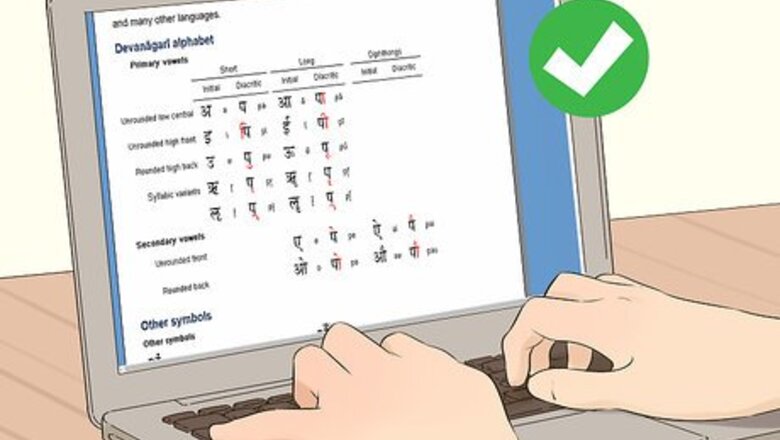
views
X
Research source
The Devanagari alphabet is written from left to right and top to bottom in horizontal lines. The alphabet includes both consonants and vowels. The language also includes more than a thousand conjunct letters, which are used to express clusters of consonants.[2]
X
Research source
Forming Individual Letters
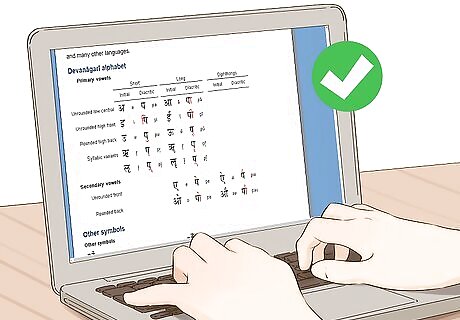
Download a chart of Devanagari letters. To write in Hindi, you need to know all the letters of the alphabet. Charts are available online that you can use to practice the individual letters on your own. Learn the basic letters first, then you'll better understand the way these letters are combined to make words. The University of North Carolina has a full chart of all the Devanagari letters available at https://taj.oasis.unc.edu/Hindi.Less.25/wrtingsys.htm. Another chart with the letters divided into pronunciation groups is available at https://www.omniglot.com/writing/devanagari.htm. Practice a small group of 5 or 6 letters for a few minutes each day. When you can write those letters automatically, move on to the next group of letters. Remember to go back and review the letters periodically so you don't forget what you've learned.
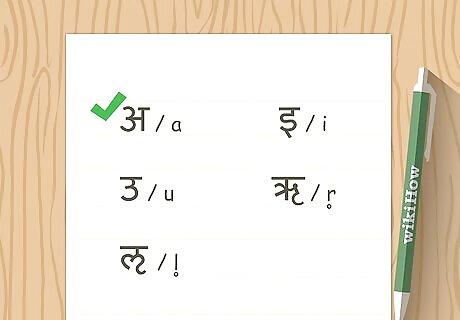
Start with short vowels. There are 5 short vowels in Hindi. In Devanagari script, these letters are only used at the beginning of words. These letters serve as an introduction to basic principles you will carry through as you learn to write other Devanagari letters. The strokes that you make are important. Doing them correctly and in order will make it easier when you start connecting letters together to write words. Your letter chart may outline the strokes to be made, or you can search online for other sources that give you the correct ordering of the strokes for each letter. The horizontal line at the top of each letter is always the last stroke to finish the letter. When you practice, try to keep the letters close to the same size, so this line is always at roughly the same height.
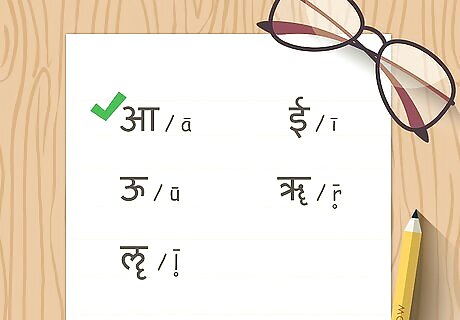
Extend short vowel letters to make long vowels. A long vowel is simply an extended version of the short vowel. For most of the long vowels, you'll add 1 additional stroke to the short vowel shape to create the long vowel. For example, अ is a short a, which has a sound similar to the a in the English word "about." Add another vertical line after the first to make a long a, आ. This vowel has a sound similar to the a in the English word "father."
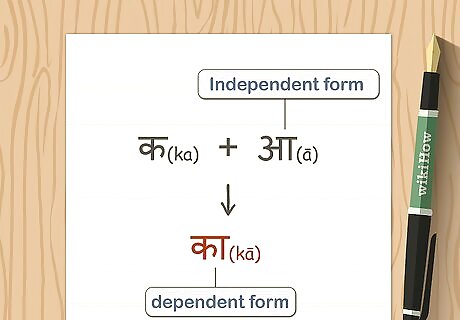
Practice dependent and independent forms of vowels. Each Devanagari vowel has 2 different forms. Use the independent form when the vowel occurs alone, next to another vowel, or at the beginning of a word. Use the dependent form (or matra) when the vowel is attached to a consonant. All consonants are attached to a short a, unless specified otherwise. Therefore, the short a, or अ, does not have a matra, or dependent form. Each vowel's matra is 1 or 2 strokes appended to the consonant the vowel is attached to. For example, the matra for a long a is ा (with the circle showing where the consonant should go). A long a attached to the letter sa would look like this: सा.
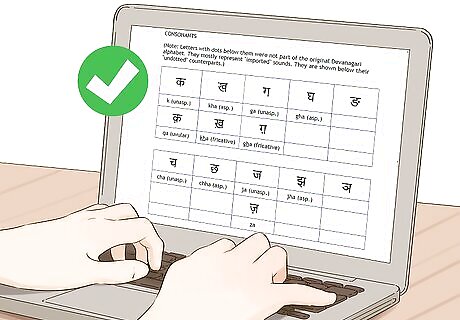
Learn consonants after you've mastered vowels. Devanagari letters are typically categorized based on where and how the sound is formed in your mouth. Start with a few letters, and practice them repeatedly until you can write them automatically. You might also practice the consonant with the different vowel matras, so you know how to write these syllables. Since Hindi is a phonetic language, this will help you when you start reading and writing words.
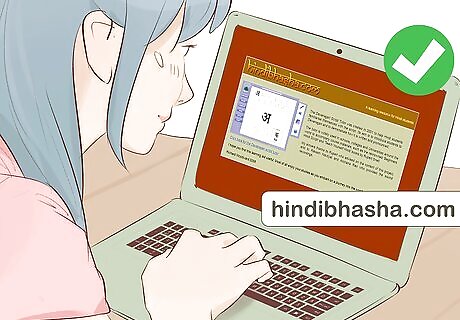
Use a script tutor to improve your writing. There are many Devanagari websites and apps available online for free that you can use to practice your writing and perfect your form. The script tutor available at https://www.hindibhasha.com/ is recommended by many university language departments for learning Devanagari script.
Creating Short Words
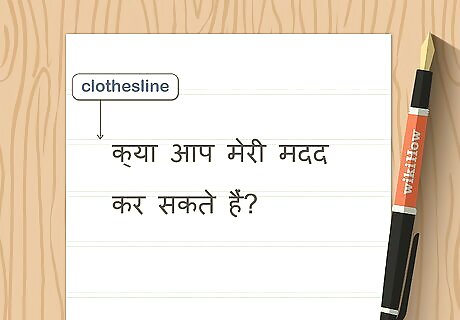
Form your letters along a "clothesline." When writing Devanagari script, all letters have a horizontal line running across the top. The letters essentially dangle from this line. Diacritical marks above the line provide information about how the letter should be pronounced. For some letters, such as the short a, the line isn't over the entire letter. Keep this in mind when you're connecting multiple letters together.
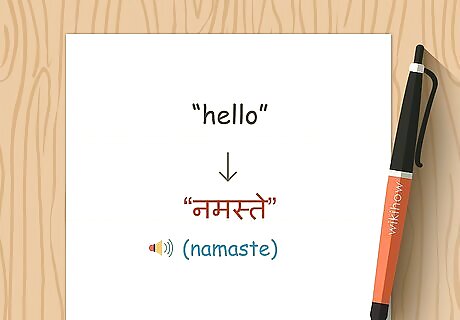
Start with some of the most common words in Hindi. Since Hindi is a phonetic language, words are spelled exactly as they sound. If you've learned some basic conversational Hindi already, you may be able to sound out the spelling of those words on your own. For example, a Hindi word most people are familiar with is "namaste." This greeting, written in the Devanagari script, is नमस्ते. Writing polite words and phrases is also important. For example, if you wanted to say "thank you" in a letter, you would write धन्यवाद.

Use a children's song to learn parts of the body. You may be familiar with the children's song "Head, Shoulders, Knees and Toes." You can replace the English words for the parts of the body with Hindi words to add these common words to your vocabulary. Most Hindi words for parts of the body are fairly short words that are easy to learn and write. You can find the words and script on many language learning websites. For example, many of the words for parts of the body included in the song are available at https://blogs.transparent.com/hindi/hindi-vocabulary-for-body-parts/. You can also use a Hindi-English dictionary to find translations for the words you need.
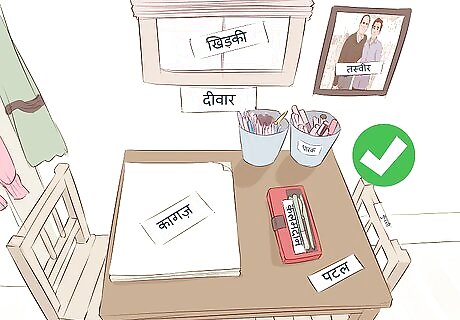
Label items around your home to increase your vocabulary. Search the internet or use a Hindi-English dictionary to find the names for objects around your home, such as furniture, appliances, and articles of clothing. Write the word in Devanagari script on a card or sticky note that you can attach to the object. Every time you pass the object, say the Hindi word for that object. Start with a handful of large objects. Once you've committed them to memory, you can add a few more. You might also go from a large object to a small object. For example, you could label your bed (बिस्तर), then later add words for "pillow" or "blanket." The University of North Carolina has an extensive introductory program on Hindi and the Devanagari script available online for free at https://taj.oasis.unc.edu/. This program includes lessons on Hindi grammar and vocabulary, as well as listening exercises and quizzes to test your knowledge. Many of the vocabulary words can be used to label items around your home.
Writing Full Sentences
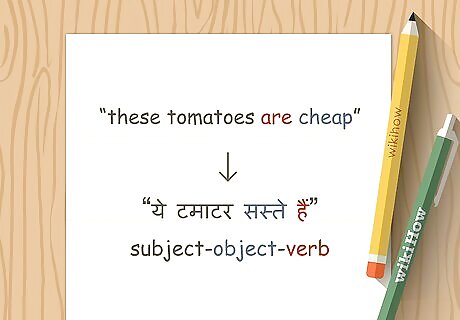
Use subject-object-verb word order. The standard word order for Hindi sentences differs from that of English. Usually the subject of the sentence comes first, followed by any modifiers or the object of the sentence. The verb is almost always last. For example, in English, you might say "these tomatoes are cheap." However, the Hindi sentence would read "ये टमाटर सस्ते हैं।" The literal translation would be "these tomatoes cheap are."

Punctuate sentences as you would in English. Hindi uses a vertical line ( । ), called a purn viraam, to indicate the end of a sentence. For example: कालापानी नेपालका हिस्सा है। The mark ( । ) acts similar to a period or full-stop in English. However, other punctuation marks, such as commas and question marks, have been imported into the language. If you use a period rather than the purn viraam, most Hindi readers and speakers will understand the mark to mean the same thing. Hindi does not have a separate mark to indicate a space between words. Simply type a space as you would in a language, such as English, that uses the Latin alphabet.
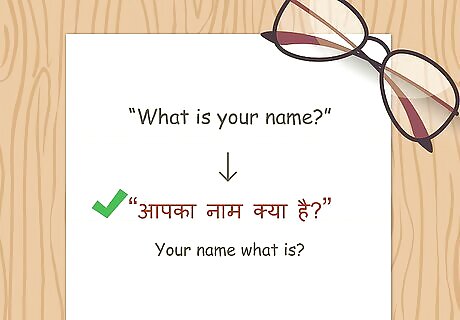
Practice writing some basic questions. To ask a question in Hindi, place the question word (a word such as "who," "what," or "when") immediately before the verb. The subject (the thing that you're asking about) will be the first thing in the sentence. For example, to write "What is your name?" you would write: "आपका नाम क्या है?" This literally translates to "Your name what is?"

Read in Hindi to become more familiar with script. If you want to learn how to write Hindi correctly, the easiest thing to do is to read a lot. Keep a dictionary nearby, and look up words you don't know. Try copying passages from a book or website to practice your writing. Colorado State University has an extensive list of Hindi resources on the internet available at https://www.cs.colostate.edu/~malaiya/hindilinks.html. Reading children's books is also a good way to become more familiar with the language and learn simple words and phrases. Check the Learning Hindi website for links to digital files of children's books that you can download for free.
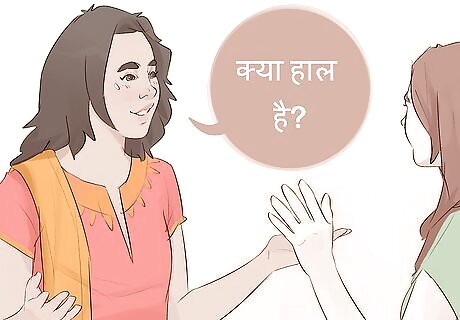
Connect with native speakers to practice. You can find a native Hindi speaker online who is willing to write back and forth to you in Hindi. Whether you send letters through the postal service or simply type emails, your writing will improve tremendously if you practice regularly. You can also read and write in various forums and social networks for native speakers and students learning the Hindi language. For example, Reddit has a Hindi language forum available at https://www.reddit.com/r/Hindi/.



















Comments
0 comment